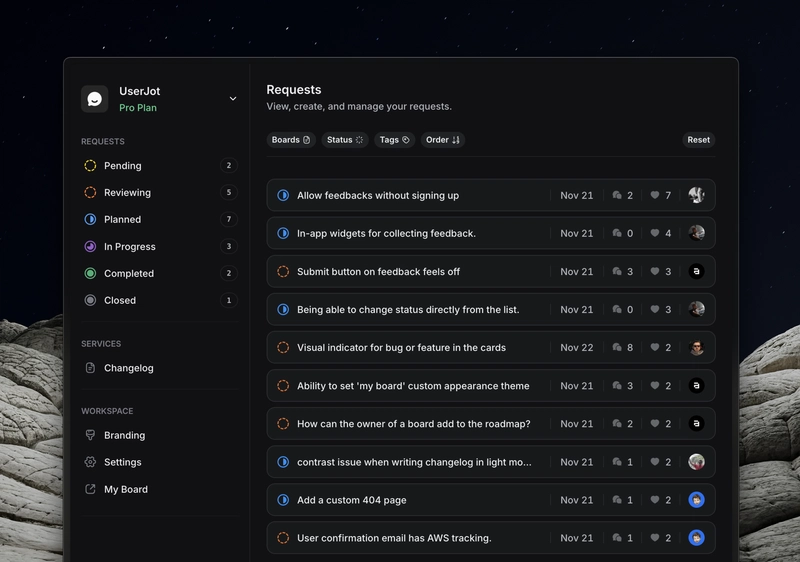There was a moment when Swift on the server didn't seem like a crazy idea.
Apple had just open-sourced the language. Vapor was gaining traction. IBM threw its weight behind Kitura. And for the first time, it felt like a modern, statically-typed language with real potential could challenge the likes of Node, Go, and even Java.
It had all the right ingredients.
Swift was fast. It was expressive. It had a type system that didn't fight you. It felt functional in all the right places, but still readable. You could write backend logic that felt clean and safe without constantly fighting the compiler.
And more importantly it was fun.
Enums, Pattern Matching, and the Little Things
Swift wasn't fun just because of one killer feature. It was fun because of dozens of tiny decisions that made the language feel like it had taste.
Here's a small example that still feels elegant years later:
enum Result<T> {
case success(T)
case failure(String)
}
func handle(result: Result<Int>) -> String {
switch result {
case .success(let value):
return "Success: \(value)"
case .failure(let error):
return "Error: \(error)"
}
}
There's no ceremony. Just logic that reads the way you'd explain it out loud.
Swift didn't invent enums or pattern matching. But it implemented them in a way that made them feel first-class, ergonomic, and natural to reach for not like a feature you had to dig through the docs to understand.
And this same clarity carried through everything else: optionals, string interpolation, protocols, value types, error handling. It was all just... nice.
Vapor, Kitura, and the Almost-Moment
When server-side Swift frameworks started showing up, they brought real hope.
Vapor felt like Swift's answer to Express but typed, async, and fast.
Kitura had corporate backing from IBM and ambitions for enterprise use.
Perfect never quite found its groove, but it was there too, experimenting and pushing the boundaries.
Spinning up an HTTP route in Vapor looked like this:
import Vapor
let app = try await Application.make(.detect())
app.get("hello") { req in
"Hello, world!"
}
try await app.execute()
And it worked. It worked really well.
For anyone coming from iOS, it was like unlocking a secret door. Suddenly, you didn't need to learn an entirely new language just to build an API. You could reuse your mental model your same data types, patterns, and tooling on both the client and the server.
It made everything feel closer. Simpler.
But It Didn't Stick
For a while, it looked like Swift might carve out a niche. But the energy didn't last.
Kitura was sunset by IBM.
Perfect faded into obscurity.
Vapor pressed on but without critical mass.
And under the surface, there were cracks.
The tooling on Linux was never great. Package resolution was slow. Even building and running projects felt brittle compared to the rock-solid Go compiler or the JavaScript dev loop.
More importantly, server ecosystems live and die by the libraries they offer. And while Swift had a vibrant community on the Apple side, the backend world never got enough attention.
It's hard to build a backend ecosystem without battle-tested ORMs, queues, mailers, cloud integrations, and all the boring glue you take for granted in more mature stacks.
In the end, Swift just couldn't compete with the momentum of Node, Python, or Go languages that had already earned their place in backend land.
I Still Miss It
Swift was the first language that made me feel like programming could be beautiful.
It wasn't just the features it was the way they worked together.
The smooth syntax.
The focus on safety, without making things painful.
The feeling that someone cared about the developer experience.
But what really stuck with me was the idea behind server-side Swift: that iOS developers could use the same language, the same types, and even the same patterns across client and server. It was one of the first setups where full-stack really meant something where you didn't need to reinvent everything when switching sides of the stack.
That idea never quite materialized in the Swift ecosystem but I find myself chasing it even now.
Today, I'm building UserJot, a feedback and roadmap tool for SaaS products. And while it's built entirely in TypeScript, that same dream lives on. I use the same language for both the client and the server in a monorepo. This makes it easy to switch between the two, and to share code between them.
It's not Swift. But it scratches the same itch.
I still bring Swift habits with me like protocol-oriented programming, or structuring code in a way that emphasizes clarity over cleverness. But I miss Swift's polish. I miss the way it made simple things feel elegant. And I miss how fun it was to write code that didn't just work, but felt right.
Swift Deserved Better on the Server
Swift had everything going for it: a thoughtful language design, modern syntax, strong typing, and real performance. For a brief time, it looked like it could become something big outside the Apple ecosystem.
It didn't happen. And maybe it never will.
But if you've never written a few hundred lines of Swift especially server-side Swift you might be surprised at how good it feels. Not clever. Not magical. Just clean, quiet, and genuinely fun to use.
And that's worth remembering.
In case you're building something yourself, I'm working on UserJot, a simple feedback and roadmap tool I built for my own products. I'd love if you gave it a try and let me know what you think.







Top comments (5)
Great post. Also UserJot is great platform to use in teams.
Thank you :)
I really get missing that feeling of elegance and flow - I'm always chasing that same blend of type safety and clarity in my stack, even though I use TypeScript now too. Do you ever think Swift could see a server-side comeback, or is that chapter closed for good?
Swift could’ve been a strong server-side language due to its safety, speed, and clean syntax. Its open-source nature and cross-platform support made it ideal for unifying iOS and backend development. However, limited adoption and ecosystem support held it back.